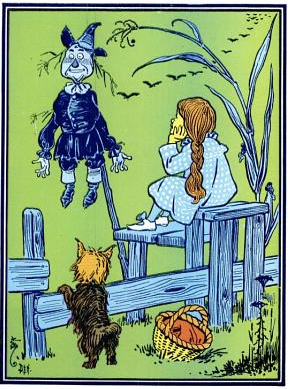Blog
-
October 03, 2019Read more »
Exerpt from September 30, 1946 Life Magazine.
A Bashful Wallflower becomes the World's No.1 Teaching Dance Master.
GI’s in their foxholes, the way the ads used to tell it, passed their few sleeping hours dreaming about mother's cooking or Rover, the faithful terrier they left behind. But to judge by the number of veterans now attending the Arthur Murray Dance Studios under the GI Bill of Rights, what they really dreamed about was learning to tread a graceful rumba. Murray, who calls himself “The World's Most Famous Dancing Teacher,” has thousands of them pirouetting experimentally in his studios at government expense and he expects to produce at least 100,000 finished products within the next year. The idea started as a joke. Early this year, a former GI who was polishing up his samba in Murray's New York studio remarked wryly that Uncle Sam should be footing the bill under the GI Bill of Rights. It had not previously occurred to Murray that a dancing school might be officially regarded as an educational institution. But, sighting a gold mine, he had a lawyer look up the terms of the GI Bill of Rights and concluded that a veteran studying to be a dancing teacher could qualify for government payment. A modest ad in the New York Times brought several hundred applicants and by April the first class of ex-servicemen was dipping, swaying and Lindy-hopping all at Uncle Sam's expense.
Full Article on Google Books | Visit the Archives
-
October 03, 2019Read more »
Exerpt from February 25, 1952 Life Magazine.
The Great Paintings of a Frustrated Recluse
Currently on display at the Chicago Art Institute, and soon to be seen at New York’s Metropolitan Museum, are 130 pictures by a man who holds a unique position in the history of modern painting, Paul Cézanne. Some critics consider him the greatest painter of the past 100 years. Even those who dissent from this high opinion consider him the most influential one. Cézanne, a Frenchman who did most of his painting between 1870 and 1900, was not only a painter; he was the creator of an entirely new method of looking at the world. And so widespread and subtle has been the influence of his method that the world, to civilized people, has never looked quite the same since. Many of Cézanne's paintings have an unfinished look about them, as if they were abandoned experiments. They depict mountains and apples that look as passionate as people, and people who look as inert as mountains or apples. Few of them constitute what the average man thinks of as a pretty picture. But nearly anyone who looks at them can sense great dig. nity and repose in their rugged brush strokes—a feel. ing of depth, weight and solidity. Part of this dignity and repose arises from the painter's way of transmuting natural objects into abstract forms, so that the observer senses cones, cubes and spheres beneath his mountains, houses and fruits. Artists have studied Cézanne's principles and evolved entire schools of painting—cubism, abstractionism—from them. There is hardly a department of contemporary art that does not owe him a debt. His carefully constructed scenes contain the germs of such widely separated developments as modern magazine layout and modern architecture.
-
October 03, 2019Read more »
Exerpt from June 27, 1949 Issue.
Modern Atomic City Grows on Remote, Guarded Mesa
Los Alamos, N. Mex. is one more American manufacturing town, but it has some truly unique features. It is the only place in the world, so far as is generally known, where atomic bombs are manufactured, and has been called the most important city on earth—real progress for a town only six years old, with a population of 9,000. Los Alamos has other distinctions. Possessing the world's finest physics laboratory and with an unusually large percentage of young physicists and technicians, its citizenry probably has the highest average I.Q. of any U.S. city, and the lowest average age: 33. Poised on a remote, canyon-rimmed mesa 7,500 feet high and accessible by only one sternly policed road, it has no crime, no strangers and, because space is limited, no cemetery. Closed to the general public since 1943 when it was taken over by the federal government as the best possible site for the design and assembly of atomic bombs, the poplar-dotted mesa (Los Alamos means “the poplars”) is now building into a carefully planned town that will eventually number about 12,000 people. Life there has certain discomforts but there are also compensations. The climate is clear and sunny, the shopping and residential areas glittering new and, among other things, there is the pleasant impossibility of guests dropping in unexpectedly from the outside.
-
October 03, 2019Read more »
Exerpt from March 9, 1962 Life Magazine.
1960's Folk Singers
Folk music has plenty of room for almost everything and everybody because its range is huge–from funereal laments and bitter satire to sweet ballads and rollicking fables. Old-timers like Burl Ives and Josh White have been mining this range for years, but right now a whole school of irreverent young groups is playing folk songs for laughs. When Dave Guard's new Whiskeyhill Singers launch a number, they often give it the full comedy treatment. Other lighthearted folk singers have helped heighten the mania that is sweeping records, TV, nightclubs and the concert circuit. The brightest of the new folk singers are shown in these pictures acting out their favorite numbers in their own distinctive and varied styles. Not all of the performers rely solely on laughter. In fact, they exploit the enormous breadth of the folk music repertoire to shift easily from broad humor to touching drama. Almost all of them dress up and popularize the old and often familiar tunes—except the finest new singer of them all, Joan Baez. She is a loner, a rabid traditionalist who specializes in sad songs of love and death which are delivered with a stylistic purity that places her in a class almost by herself.
-
October 03, 2019Read more »
Exerpt from March 17, 1958 Issue.
Sugartime's Singing Sisters
The melody is nursery-song simple and the word "sugar” recurs 28 times in the song's 2 1/2 minutes. But as sung by the McGuire sisters, Sugartime has sold more than a million copies and was the country’s best-selling record last week. The girls sing it in breathless close harmony with the energetic enthusiasm and expert rhythmic twists that have made them the country's top girl vocal group. But a crusty patron who heard them do Sugartime at the Waldorf-Astoria in New York concluded that when a hit song is that silly it sounds best when as many people as possible sing it. Unlike most sister acts in show business, the McGuires, Christine, 30, Phyllis, 27, and Dorothy, 29 are in fact sisters. They were born in Middletown, Ohio and when Phyllis was 10 started intoning three-part hymns in a nearby church where their mother was minister. During the week they sang for cake and ice cream at weddings until they won an amateur contest for getting through Three Little Sisters. Ten years after that triumph they turned professional. Since then they have sung in many of the best nightclubs between appearances with Arthur Godfrey, who did a monumental meddling job in Dorothy's romantic life. Close behind Sugartime in sales this week are the records of other vocal groups whose work has suddenly jumped into new popularity. Their success has brought out a rash of vocal combinations with odd names like The Four Ekkos, The Brother Sisters, Dickey Doo and The Don’ts, and a satirically tagged quintet billed as The Monotones.
-
October 03, 2019Read more »
Exerpt from September 8, 1961 Life Magazine.
The soft Side of a Hard Egg.
It was sunny again. It was always sunny there. And hot. He stood without moving wondering where the action was, and gazing at the blonde stretched out casually in the dirt. She got up and slithered toward him. He knew what she wanted. He embraced her first gently, then violently, Her lips glistened in the sunlight-reflecting joy, pain, sorrow, beauty misery-manhood. He knew he couldn't trust her. He broke away and turned to the brunette lounging languidly on the steps. "You drinkin' again" he muttered disgustedly, she sighed. Suddenly the whole-place erupted. Out of nowhere came two guys, several dogs, cats, kittens and a white duck, “Okay, Mike." Yelled one guy, “let’s go!" The brunette dropped the drink, the blonde screamed. The guys took after the duck, the duck attacked the dogs, the cats shrieked. There it was the action. And he never avoided action. But before he moved, he spotted it out of the corner of his eye-the thing they'd been after for weeks. He yelled triumphantly: “The missing scrabble!" He grabbed it and rushed into the house. It was another afternoon in Mickey-Spillaneville. The action was all there but the scene was all wrong. The blonde, for one thing, was 4 years old and nobody shot her. The brunette who was drinking was 12, and it was Pepsi and ice cream. Mike was 6 and the other guy was 10. Mickey spillane wasn't even armed. It was worlds away from the rainy streets,
-
October 03, 2019Read more »
Exerpt from June 1, 1959 Issue.
First Time in 19 Years Yankees are in Last Place
The haughtiest heads in baseball were bowed in humiliation last week. on a day deservedly known in New York - Black Wednesday, the New York Yankees, pennant winners for nine out of the last 10 years, slumped without a murmur into a place they have not occupied in 19 year--the American League cellar. A few fans were loyal, but they were outnumbered 100 to 1 by a nationwide army of rabid Yankee-haters who for years had had to content themselves with fictional accounts of Yankee downfalls in Douglass Wallop's novel, The Year the Yankees Lost the Pennant, and it’s stage-screen versions. Damn Yankees. Now they could enjoy a far worse debacle than anyone, even wallop, had dared imagine. The Yankee misery began with the season less than a month-old. While losing a series of one-run games, they skidded into the second division and then the dam broke. The strange thing about their final dunking was that everybody, including the Yanks themselves, seemed to know it would happen. They were playing the Tigers, a constant thorn in their side, and on the hill was Frank Lary, the old Yankee-killer. Just before the game Yankee Manager Casey Stengel decided to save his star pitcher, Bob Turley, for another day. So began the debacle. If the Yanks had been beating themselves in previous games, now they seemed lent on self destruction. They threw the ball away, kicked it around, let 11 Tigers bat in one inning without changing pitchers. It was the most humiliating three hour-that Stengel ever sweated out in the dugout.
-
October 03, 2019Read more »
Exerpt from March 10, 1961 Life Magazine
Bold Colors, Hardy Growth for Showiest Schrub.
The rhododendron is a shrub that took 50 million years to acquire its present beauty, handsome foliage and clustered flowers that have made it a garden favorite. But until recently the brightest and densest rhododendrons needed a moist, mild climate. Northeastermandinland rhododendrons have mostly been straggly with pale, smallish flowers. Now hybridizers have developed beautiful plants that are hardy in cold climates which such hybrids could never endure before. The two new rhododendrons shown above on the Cascade Mountains of Washington are King of Shrubs a low, wide-spreading bush with orange flowers. and Smoky a tall rhododendron unique in flower color. These will grow in the Northwest, northern California and milder sections of the cast. Four new hybrids that are hardy in all the cast and some inland sections are on following pages. They are spectacular bushes yet tough enough to stand 25° below zero winters. Instructions for planting –early spring is the best time.
-
Read more »
Exerpt From November 27, 1964 Issue.
Six-Month Delay for the Big Fight
Here it was the day before the scheduled heavyweight championship fight, with as 4.5 million gate practically in the till the Boston Garden and 230 closed-circuit TV theaters across the U.S. But there lay the once irrepressible champion Cassius Clay in a Boston hospital, stating woodenly at nothing and taking nourishment intravenously while his mother tenderly tidied his hair, The cause of Clay's predicament was emergency surgery-necessitated by an acute hernial attack in his lower abdomen that hit with the force of a knockout punch by his intended opponent. Sonny Liston, while under postoperative sedation, Clay for once in his life had little to say to his mother who came by bus from Louisville to be at his side, to his young bride Sonji who brought flowers, or to his Black Muslim colleagues who hovered around trying to cheer up the man they call Muhammad Ali, But when the drugs wore off and cassius began to perk up, he inevitably launched into his favorite subject, himself. Thanks to the operation, he said, he would probably level off at a lithe 200 pounds and be greater than ever. Meanwhile Lision will have to wait at least six months for another crack at Cassius, a long time for an aging ex-champ whose fighting days are growing shorter.
-
October 03, 2019Read more »
Exerpt from December 28, 1953 Life Magazine
Rare Original Drawings Retell Dorothy's Amazing Adventures.
There’s a cyclone coming,” shouted Uncle Henry, and he ran toward the sheds where the cows and horses were kept. "Quick, Dorothy, run for the cellar" Aunt Em screamed, and she climbed down through the trap door in the floor of the house. But Dorothy ran to get Toto, her little black dog. Then came a great shriek from the wind and a strange thing happened. The house whirled around two or three times and rose slowly through the air. Dorothy felt as if she were going up in a balloon. Toto sell out through the cellar door, but Dorothy pulled him back again. On and on they rode until, many hours later, landed with a great bump. The little girl gave a cry of amazement. She was in a country of marvelous beauty. Three queer little men appeared with an old woman. “Welcome most noble Sorceress to the land of the Munchkins," said the old woman. "I am the Good Witch of the North, and we are grateful to you for having killed the Wicked Witch of the East, You shall wear her Silver Shoes." Dorothy saw the Silver Shoes sticking out from under the house which had fallen on the Wicked Witch. But Dorothy wanted only to get back to her Aunt and Uncle in Kansas. "Can you help me find my way?" she pleaded.


















